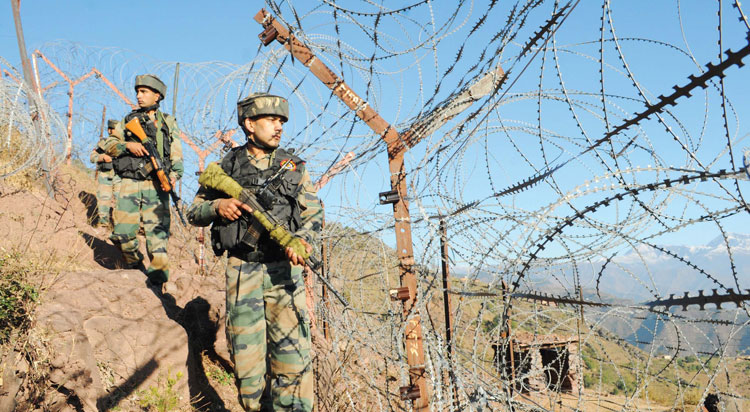The term Line of Control (LoC) refers to the military control line between the Indian and Pakistani-controlled parts of the former princely state of Kashmir and Jammu—a line which, to this day, does not constitute a legally recognized international boundary but is the de facto border.
The line of control is a barrier which consists of fencing and concertina wire (like large coils) which is 8-12 feet high, electrified and connected to a network of motion sensors, thermal imaging devices, lighting systems and alarms so as to give a signal if someone sneaks in.
Originally known as the Cease-fire Line, it was redesignated as the "Line of Control" following the Simla Agreement, which was signed on 3 July 1972.
The Line of Control (LOC) runs 742km (460 miles) dividing Indian- and Pakistan-controlled Kashmi, and acts as part of the de facto border between the two countries. The military frontline, which runs through inhospitable terrain, has separated hundreds of families and even divided villages and mountains.
The LOC is rooted in the ceasefire lines drawn up after the first India-Pakistan war in 1947-8. It was formally established in 1972, after a third war between India and Pakistan in 1971.
The LOC has been a flashpoint between the two nuclear-armed countries since its foundation. In 2004, Indian army engineers fenced off most of the LOC in what is seen as an ambitious attempt to curb the influx of militants.
